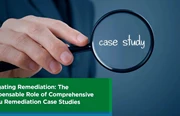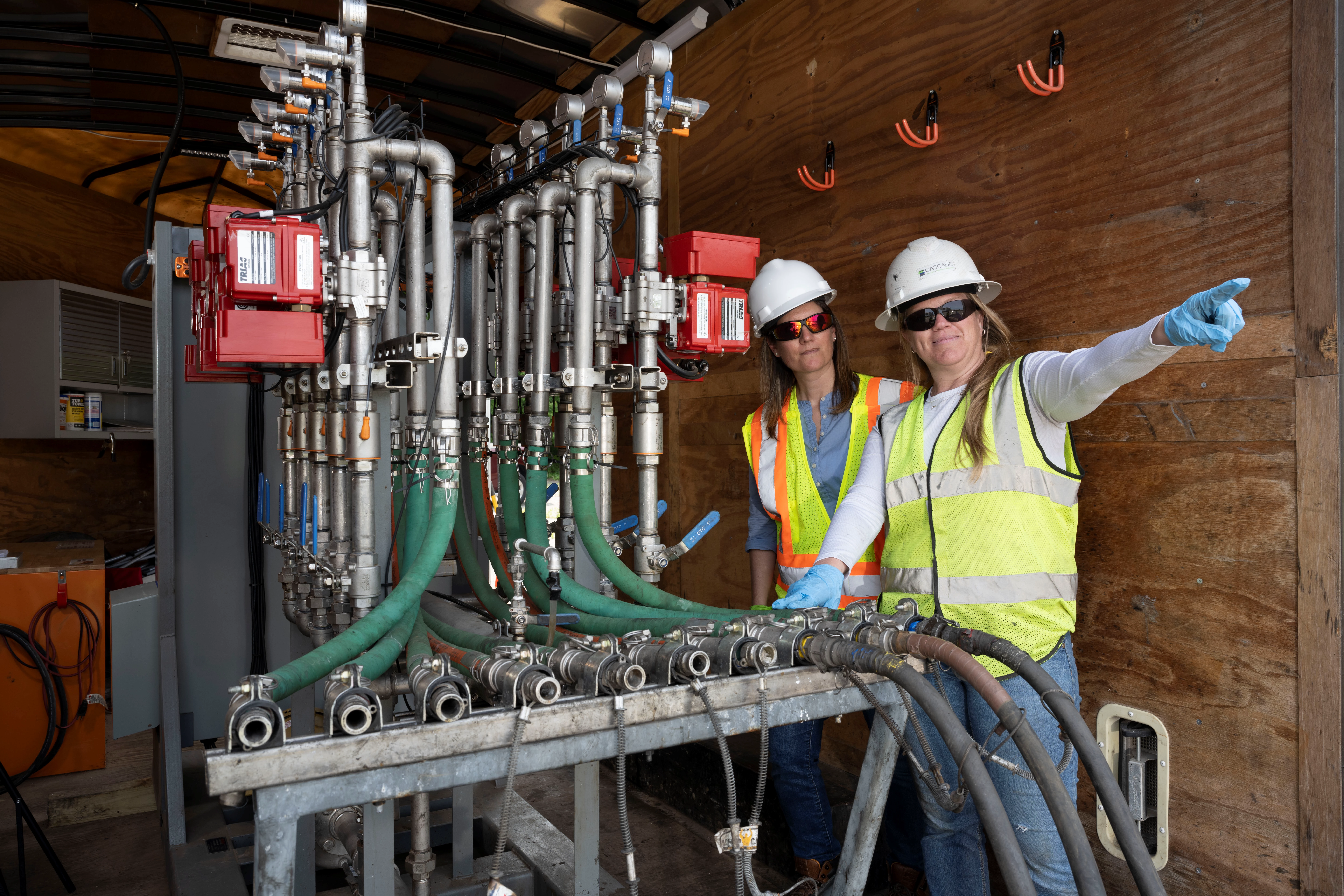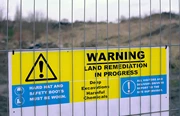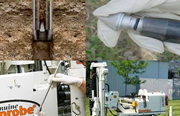- Eliot Cooper
PFAS contamination is increasingly in the news. As the public grows ever more aware of the dangers of this emerging contaminant we’re seeing a renewed prioritization from federal and state governments regarding infrastructure funding, research, and regulations.
While this is good news for our environment, it means environmental consultants who have not worked on PFAS-contaminated sites may feel like they are playing catch-up with today’s best practices. Site owners are also concerned about what changing regulations mean for their ongoing operations and associated costs.
There is a lot to know about current characterization technologies and best practices in working on PFAS sites, and it can be overwhelming. In our on-demand webinar, “PFAS 101: Characterization Technologies and Best Practices,” our experts cover the basics of traditional site characterization for PFAS-contaminated sites.
In this blog post, we will discuss the issue of PFAS, the available site characterization technologies, and the best practices to be followed. We’ll also look at recent developments in the ASTM standards and how this will impact real estate deal flow.
PFAS in the Environment
Per- and polyfluoroalkyl substances (PFAS) have been used in many applications since the 1930s, including consumer products, and is ubiquitous in the environment. As concerns have grown about the impact of PFAS on human health and the environment, mitigation efforts, such as phasing out products and addressing contamination, have increased exponentially.
Characterization Technology for PFAS Flux: WaterlooAPS™
In the past, the characterization of PFAS followed traditional methods from direct push technology or installation of monitoring wells. Traditional groundwater characterization is great for pollutants like solvents or benzene with low parts per billion standards, however, with PFAS having proposed low part per thousand levels, it’s a whole new ball game with a lot more focus on eliminating cross contamination.
Understanding PFAS flux has become a key design parameter and a data collection parameter for in situ and ex situ treatment systems. Cascade’s Waterloo Advanced Profiling System™ (WaterlooAPS), capable of measuring hydrostratigraphic data while collecting multiple PFAS groundwater samples on a single direct push rig advancement, has become one of the go-to technologies to define flux. It’s one of the best ways to add high resolution data to your PFAS conceptual model due to its ability to identify flux zones.
WaterlooAPS is ideally set up for PFAS groundwater sampling due to the real-time log of hydraulic conductivity and relative permeability of the soils as the tool advances through them. Water is injected into the subsurface from a pressurized reservoir using flow rates and back pressure collected by an inline flow meter and pressure transducer. The operator can determine the best intervals to stop during one push and collect a defensible low flow groundwater sample. The discrete sample collection is what sets this tool apart from other characterization methodologies that could experience cross contamination in the same borehole.

Traditional Sampling Best Practices to Prevent PFAS Cross Contamination
When it comes to best practices, Cascade follows guidance from the Environmental Protection Agency (EPA), the Interstate Technology and Regulatory Council (ITRC), and several states. In 2017, we assembled an internal guidance document for dealing with PFAS. Usually, the client or site owner directs the on-site protocols, but we make sure that our teams are very familiar with best practices before they approach a PFAS project.
Our PFAS guidance includes a list of items that are prohibited or should not be used and a list of preferred items to use. For example, instead of PTFE/Teflon®-containing pipe thread lubricant, we use Bio-Lube or other vegetable- or bio-based products. What’s on the list includes equipment as well as clothing and hygiene. Do not wear new unwashed clothes (but also don’t wear clothes that have been washed with fabric softener); do not use sunscreen with PTFE (the word “fluoro” appears in the ingredient list) but use natural or organic products. And if you use a smart phone, you must keep it out of the sampling zone and wash your hands after using it.
Cascade conducted a study in 2017 to look at common components in the drill rig and associated equipment that would have the potential to contain PFAS. We identified Teflon, Fluon, and Viton, among others, in these components. We redesigned the equipment to remove all Teflon and LDBE components from the system, including all valves and pump tubing. We also replumbed the system to allow for seamless collection of groundwater samples right into PFAS sampling bottles.
Of course, it's not pragmatic, feasible, or cost-effective to remove every integral component from a rig. Cascade relies on equipment rinse blanks to ensure that metal contamination doesn’t come from the equipment. The injection water itself is either replenished in a stainless-steel reservoir from a certified PFAS-free water source on client sites or filled with water provided by analytical laboratories certified as PFAS-free.
We have also done due diligence with our vendors to confirm that no PFAS was used in the manufacturing of their products.
New ASTM Standards and Phase 1 Investigation
In March 2022, the EPA adopted a revised ASTM standard (E1527-21) that for the first time included a reference to PFAS. These standards would have a significant impact on a wide array of entities including investors, lenders, bankers, insurers, and any parties contemplating mergers and acquisitions.
For now, the release of E1527-21 puts these stakeholders in the real estate deal process on notice as to what’s known as the “standard of care” for PFAS that will be expected under their due diligence processes. Financial institutions may start asking or demanding whether assessments voluntarily consider PFAS, and state governments may also include these requirements, if they don’t already.
To learn more about PFAS, watch our on-demand webinar, “PFAS 101: Characterization Technologies and Best Practices.”
About the Author

Eliot Cooper
Vice President, Technology and Business Development
Eliot Cooper is the Vice President of Technology and Business Development. In this role, he helps clients design efficient and cost-effective remedies using high resolution site characterization (HRSC) and a vast array of remediation options. His specialty is finding the right combination of tools and technologies for complex sites, and ensuring every step of the remediation process is optimized to achieve results. He is currently applying this experience to the new world of PFAS Characterization and Remediation.
Categories
- Site Remediation
- Drilling
- Careers
- Cascade Chemistries
- Safety
- Site Characterization
- Thermal
- Rotary
- Sustainability
- In Situ Stabilizaton
- High Resolution Site Characterization
- Injection
- Sonic Drilling
- Automated injection
- corporate sustainability
- case studies
- in situ thermal remediation
- Cascade Drilling
- Over Water Drilling
- In Situ Stabilization (ISS)
- ISS
- Environmental Remediation











